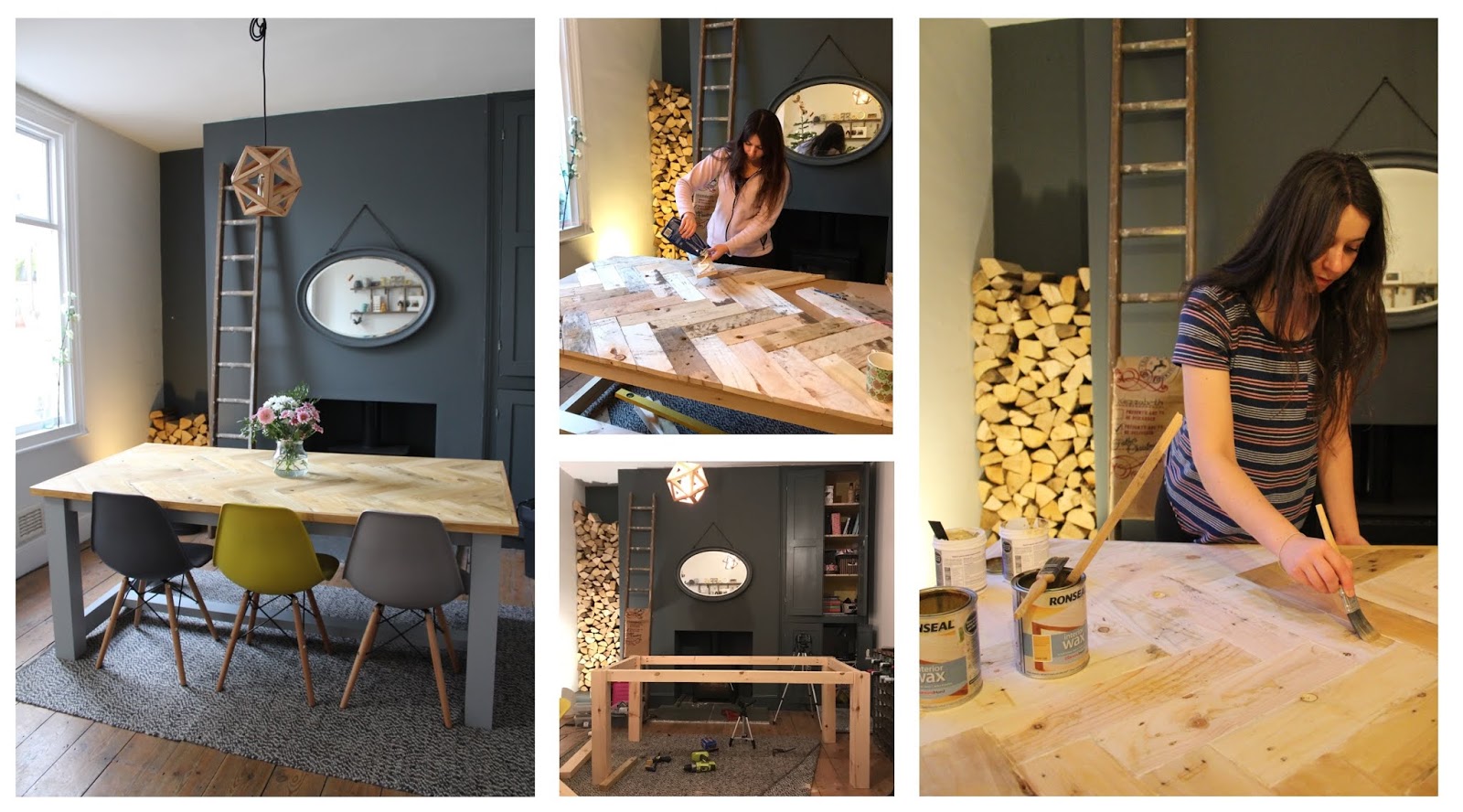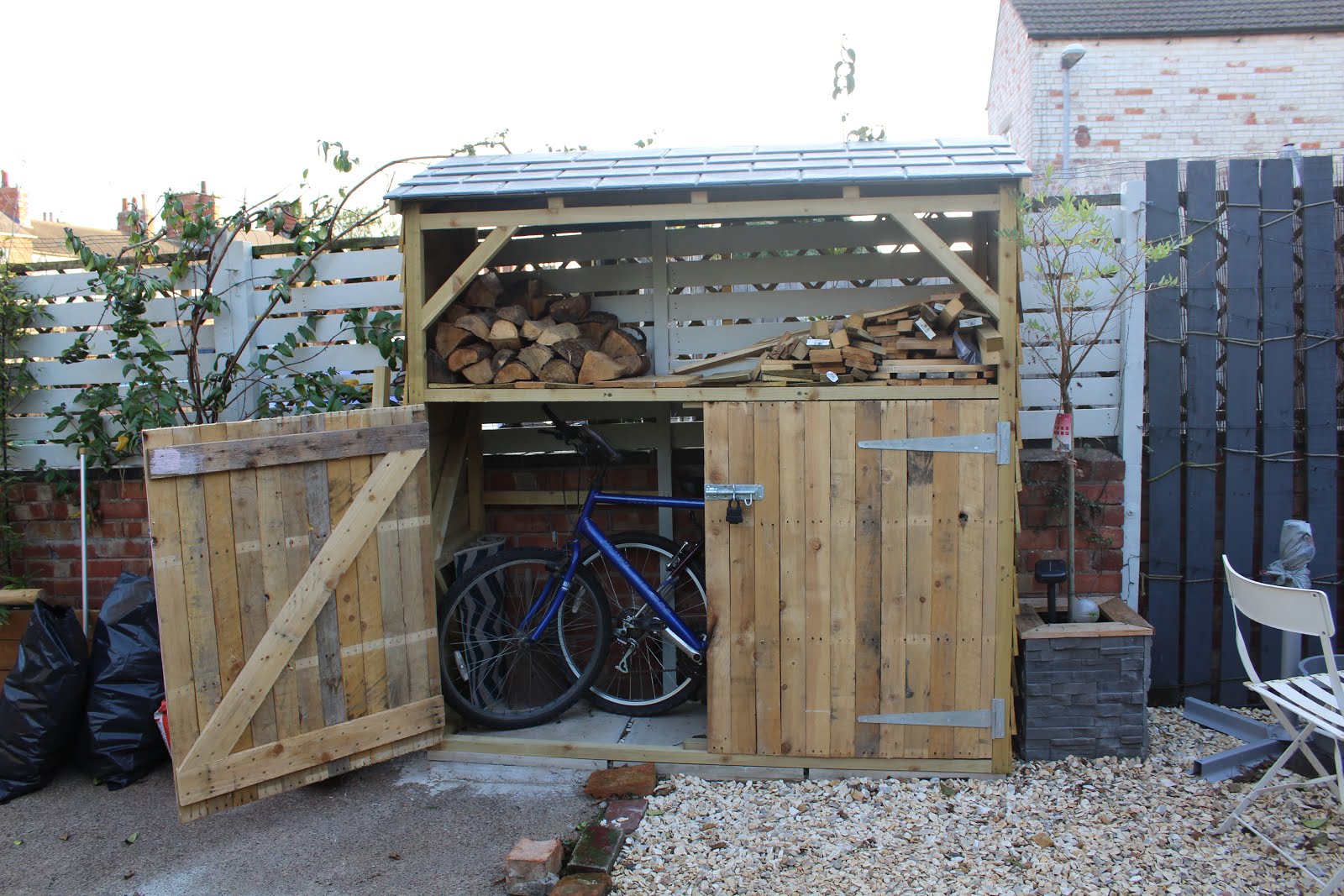AD: This post is sponsored by Gorilla Glue Europe Ltd.
Now that Dylan is a fast-growing toddler (where does the time go?!), he’s beginning to accumulate a fair amount of toys; toys that need somewhere to live. So I decided to build a storage solution, DIY-style. I wanted it to be fun and quirky, but also aesthetically pleasing, toddler-friendly, and practical too. So I came up with the idea of a DIY house-shaped toy storage unit.
The design fits in nicely within our dining room/playroom set-up and I love that the shelves make his toys almost appear more like decor when not in use. And what’s more, Dylan seems to love it too!

If you want to give building this DIY house-shaped toy storage unit a go yourself, then keep reading for a full step-by-step tutorial.
Disclosure: This post contains affiliate links, which allows me to receive a small commission if you visit a link and buy something on my recommendation. Purchasing via an affiliate link doesn’t cost you any extra, and I only recommend products I have bought or used myself.
This blog is part of the eBay partner network and the Amazon Associate Programme. All affiliate links to these sites are clearly marked with an asterisk (*). Click here to read more about how affiliate links work on this blog.
How to Build a DIY Toy Storage Unit in the Shape of a House
You Will Need:
- Timber (I’m using 34mm x 34mm*) and requires 7 x 1.8m lengths
- 12mm MDF
- Pencil and Tape Measure
- Drill* and drill-bits
- Mitre Saw* (or a hand saw with mitre box*)
- Pocket Hole Jig* (optional)
- Clamps*
- Screws (I’ve used 40mm and 70mm lengths)
- Gorilla Wood Glue*
- Pocket Hole Plugs* (optional)
- Flush saw* (optional)
- Sander with 120-grit sandpaper
- Jigsaw*
- MDF Primer* and Paint
Step 1 – Cut Timber for the Frame
Using a tape measure, I marked up my 34x34mm timber* to cut to the following sizes:
- 5 x 1m lengths
- 4 x 30cm lengths
- 4 x 68cm lengths with a 45-degree angle on one end
I then cut this using a mitre saw*, however, you can also use a regular hand saw* with a mitre box* instead. These are inexpensive and will help you cut a straight line whilst also allowing you to cut the perfect 45-degree angle too.


Of course, you can make your toy storage any size you wish, in which case, you’ll need to amend the measurements above to your own size.
Step 2 – Cut Timber for the Roof
I’ve added this bit separately to the step above, in case you’re making a shelving unit of a different size as these dimensions for these cuts took a fair bit of working out.
First of all, you’ll need to know the measurement for the overall width. If you’re following my measurements this is 36.8cm. From this, I could work out where the center point needed to be (18.4cm) which was done by dividing 36.8cm by two. This is where we want the point of the roof to meet for a perfectly symmetrical roof shape.
I marked this on some cardboard and positioned all my wood in place until it aligned perfectly with the center point I’d marked out below. Where the timber overlapped showed me where I needed to cut and how long those lengths of wood for the roof needed to be.
It’s important to remember one piece of timber will need to be 34mm longer (or the same thickness of your wood) as one length of timber will rest on top of the other in order to secure together. You can see what I mean in the images below.
If you’re making the toy storage unit the same size as mine you will need to cut your wood for the roof to the following dimensions:
- 1 x 29cm with a 45-degree angle on one end
- 1 x 25.6cm with a 45-degree angle on one end


Step 3 – Add Pocket Holes
Using a pocket hole jig*, I then added two pocket holes at each end of the 1m lengths of timber and the 30cm lengths of timber. I also added one pocket hole to the smaller piece of timber which will be used for the roof, where it will join onto the longer one.
If you haven’t used pocket holes before, these allow the screws to be concealed from view when finished. If you don’t have a pocket hole jig, you can screw through the front of the frame and fill over your screws instead. You can see this done on a similar tutorial for a DIY shelving unit here.
In my opinion, however, pocket holes look a lot neater and a pocket hole jig* is a worthwhile investment if you plan on doing more woodworking projects like this! It’s really easy to use and the jig basically allows you to drill a hole at an angle into your wood, which gives you a perfectly neat ‘pocket hole’. You can then join the wood together by screwing through this hole. These holes will be on the inside of the unit and therefore out of sight when complete.



Step 4 – Assemble House Shaped Ends and Glue Together
Before screwing everything together, I applied some Gorilla Wood Glue to each join and then used clamps* to hold the wood down onto my workbench whilst I screwed everything together using 40mm screws. Gorilla Wood Glue will add additional strength to the build and is good practice to use in all woodworking projects, particularly where only 1 screw is used at a joint (such as the roof parts of this build).
As you screw the wood together, the glue will ooze out of the joint and you can simply wipe this away. Although the Gorilla Wood Glue is white when applied, it dries a natural wood colour so won’t be noticeable once set!
For the middle piece of wood (which will become the top shelf), I attached this 33cm from the bottom, meaning the top shelf will be 33cm high from the floor. You can position yours higher or lower if you wish.





In order to attach the roof part, I used 70mm screws and chose to screw through the top of the wood (as seen below) which means the screw will be visible, unlike those in pocket holes. However, this was much simpler due to the angle of the join (45 degrees), and can be filled over later. I always recommend pre-drilling a hole before adding screws like this as it will help stop your wood from splitting. As we’re only using 1 screw at each joint for all parts of the roof, the wood can be liable to twisting, however, with Gorilla Wood Glue, there will be zero movement once set.
You can also see how two 45-degree angles fit nicely together below to give the perfect house-shaped roof.



Once the house-shaped ends were screwed together, I then clamped across the width for additional gripping pressure whilst the Gorilla Wood Glue bonds. This is actually really quick and only takes 20-30 minutes, so time for a quick break and cup of tea!

Step 5 – Complete Rest of the Frame
Now we have the two ends built, I then screwed and glued all the longer 1m lengths of wood to both ends to join everything together and create a full 3D house shape with the last piece of timber attaches at the very top of the roof peak.




Step 6 – Add Plugs or Filler Over Screws
If you have any visible pocket holes or screws, filling over these or adding plugs is a great way to hide them. Although my pocket holes won’t be visible, I wanted to fill them anyway as this is also good practice to do, provided you don’t plan on dismantling your storage unit in the future.
To fill my pocket holes, I’m using some pocket hole plugs* which are matched to the wood I’m using (pine). I added some Gorilla Wood Glue* into my pocket hole and then slotted the plug in. Once this had dried, I used a flush saw to cut away the excess so that the plug is flush with the wood.



You can also mix Gorilla Wood Glue* with sawdust to make your own wood filler and fill any cracks or gaps in your wood. I used this method to fill over the screws that would be visible on the roof part of the build. I then sanded both the filler and the pocket hole plugs for a smooth finish.



Step 7 – Sand House Shaped Frame
As this is a kid’s storage unit, it’s really important there are no sharp edges, so sanding is key. I took the unit outside and used some 120-grid sandpaper with an electric sander to sand all edges and soften any corners.



Step 8 – Cut MDF For the Shelf
For the shelf, I’m using 12mm MDF but you could also use plywood or any other sheet timber. I purchased my MDF from a local timber yard where they also cut it to size for me. This obviously saves me a job, so all I needed to do was cut out the corners so it could into the house-shaped frame.
To do this, I drew around an offcut of the 34x34mm wood at each corner and used a jigsaw* to make the cut. I then sanded the edges and corners of my MDF.



Step 9 – Prime and Paint
The final step of this project was to prime and paint. I’m choosing to keep the frame in its raw pine finish, although I may add some wax or oil in the future. As for the MDF, I’ve used a suitable MDF primer* first and then added a lovely muted purple over the top. This is actually Cuprinol garden paint in the colour ‘Heart Wood’* which I had left over from another project and I think it works really well.



Once dry, I used Gorilla Wood Glue on the underside of the MDF and clamped it onto the shelf to provide gripping pressure whilst bonding, which takes 20-30minutes. And that’s it! It took me several days working between naps but it was a fairly easy build on the whole. Once I had the two house-shaped ends figured out and built, the rest took barely any time and I’m really happy with how it turned out.





I love how this house-shaped toy storage looks in our dining room/playroom and it’s the perfect height for Dylan to easily reach all his toys. It fits his storage boxes perfectly and there’s still room for bigger toys or bigger boxes, so hopefully, this won’t be outgrown anytime too soon either.
As for costs, I spent just £35 on the timber and £12 on MDF making this a really inexpensive build. I already owned everything else, including paint and screws, etc but this would probably add another £30+ if you needed to buy these.
I hope you like this DIY house-shaped toy storage and that this tutorial was useful. If you make your own version – I would love to see it! You can share with me on Instagram here. Or if you have any questions, feel free to drop me a message below.
Happy DIYing!
This blog post was sponsored by Gorilla Glue Europe Ltd. All words and opinions are my own.
*This post contains affiliate links where an asterisk (*) is used.











No Comments